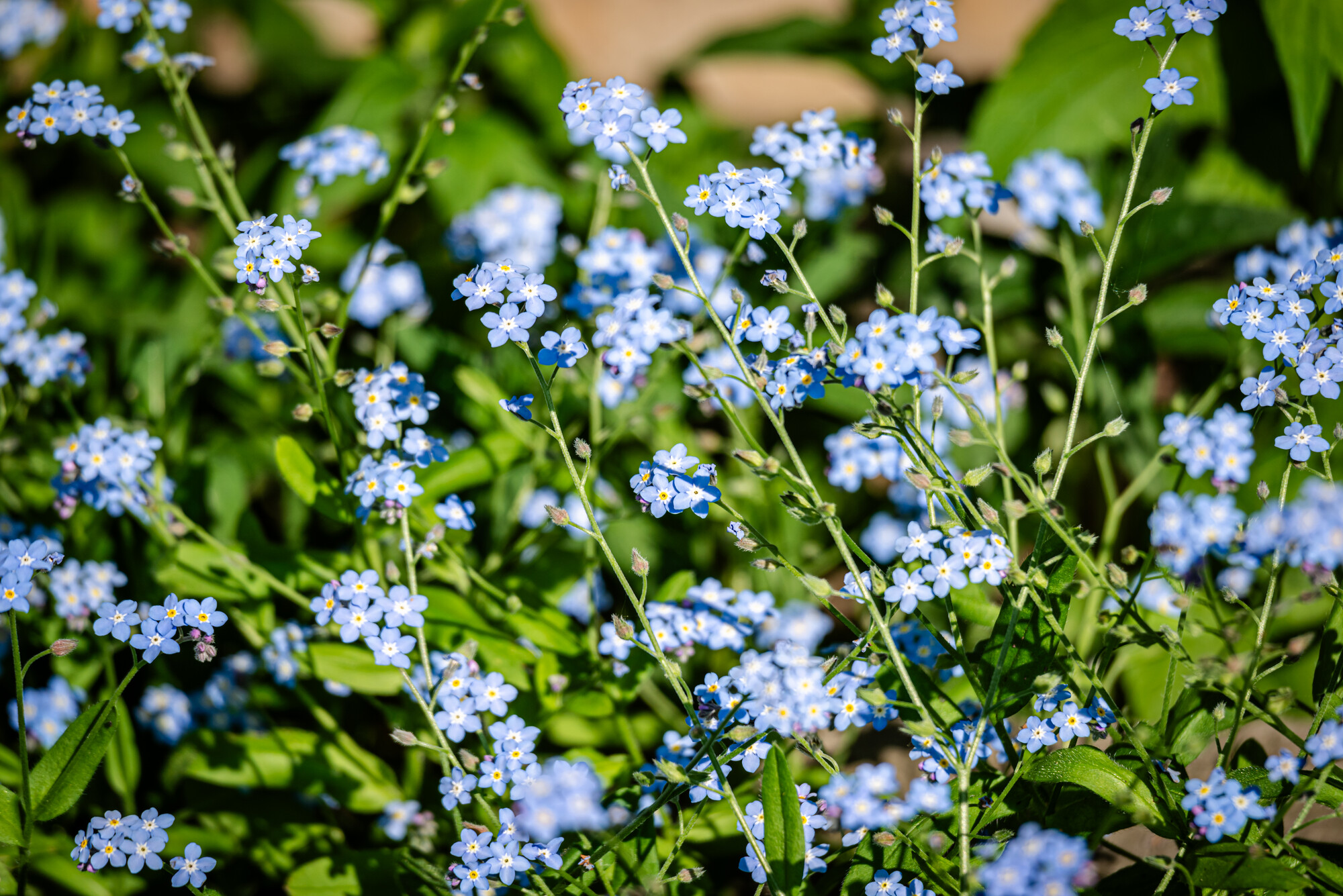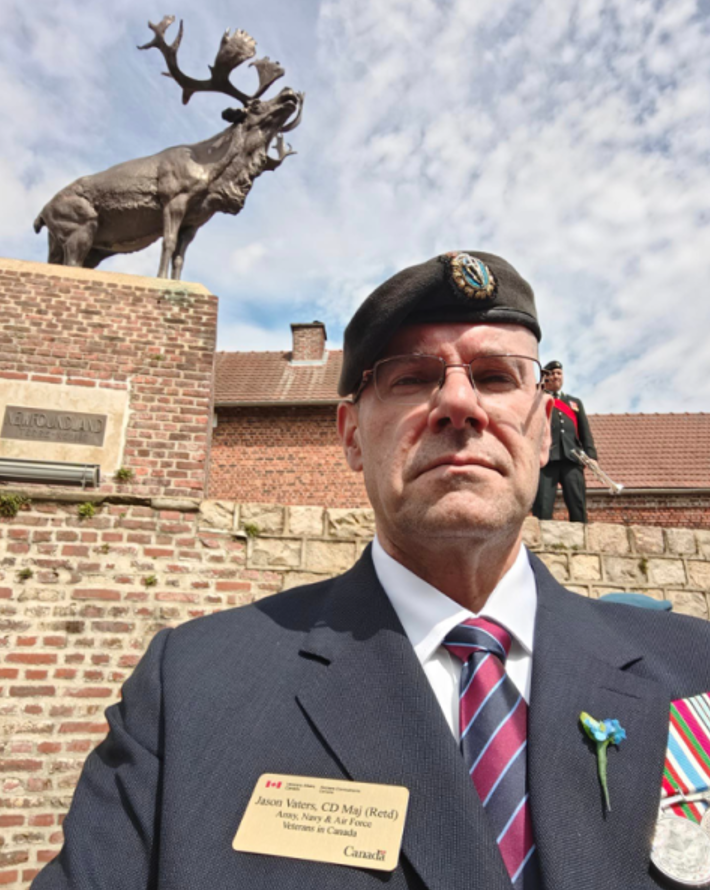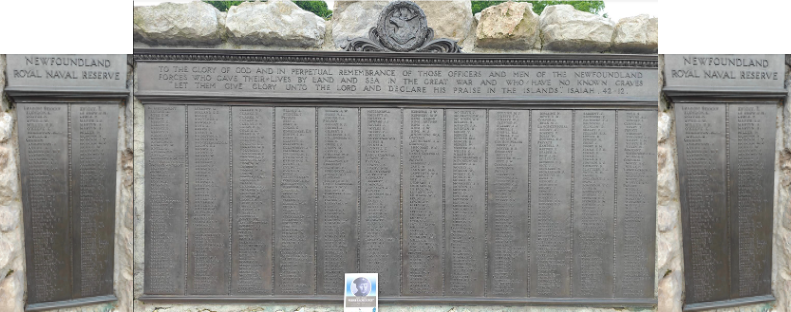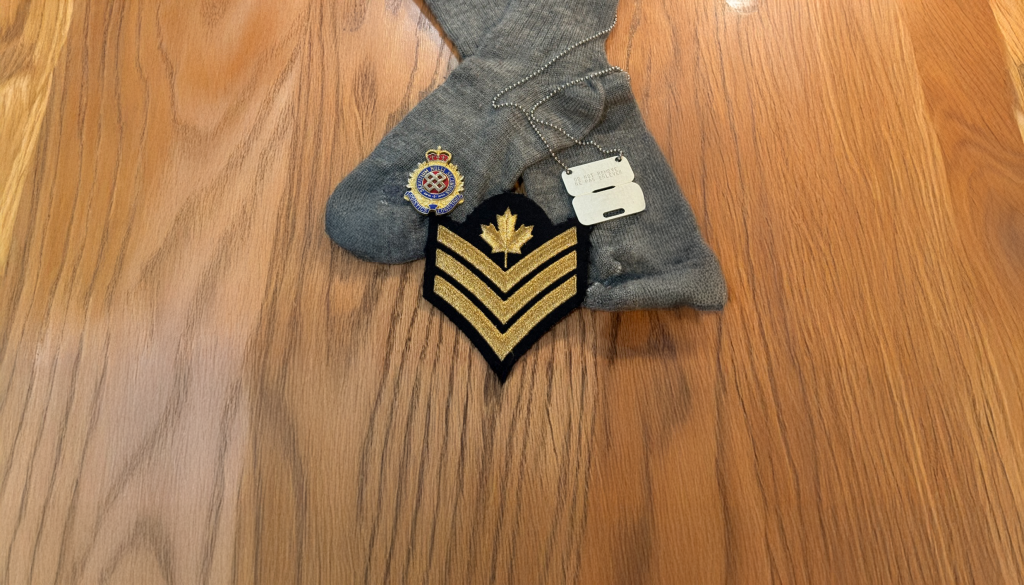- 2024-06-13
- Blog
A soldier’s return: Remembering Newfoundland’s lost son

In May 2024, the remains of an unknown First World War soldier from Newfoundland were brought home to rest from Beaumont-Hamel in northern France. Read the first-person perspective of a Canadian Armed Forces Veteran who was part of the repatriation ceremony, thoughts from a Newfoundlander Veteran and a reflection on the significance of the repatriation event from the Atlas Institute’s National Strategic Advisor for Veterans.
Brian McKenna, Warrant Officer (Ret’d)
National Strategic Advisor — Veterans
Atlas Institute for Veterans and Families
I feel that commemoration for Veterans is one thing that Canada does rather well. But to live up to that, we can never get comfortable with what we’ve done. The commitment of Veterans has eternal consequences and so we too must show the same commitment in the way we care for them. There is no expiry date, even once they and their Family members have long passed. With that in mind, there’s a lot to take in as Newfoundland brings back one of its lost sons from Beaumont-Hamel to be entombed as their unknown soldier. It offers a chance for a history lesson as well, as I myself had something to learn: the premier of Newfoundland and Labrador becomes the soldier’s official next–of-kin.
Prior to joining Canadian Confederation, Newfoundland had its own proud and tragic military history as a dominion within the British Empire. It sent personnel to many of the same conflicts Canada did, but as its own entity and often to different places than Canadians due to their placement in the British military. This meant that while Canadian stories of the First World War often had places like Flanders, Belgium and Vimy, Newfoundlanders found themselves working with the Anzacs (Australian and New Zealand forces) during the campaign of Gallipoli, in modern-day Turkey, but which was part of the Ottoman Empire at that time. Those military ties are still held and exercised today.
From there, the Newfoundlanders were redeployed to France and suffered incredible losses on July 1, 1916 at Beaumont-Hamel, where the vast majority of the regiment was killed or wounded. One of those men in the battalion just had his unidentified remains repatriated to Newfoundland last week. He will be present for every future Remembrance Day ceremony in St. John’s, as his final resting place will be at the new monument at the Newfoundland National War Memorial.
It matters. It matters that our commitment to him never ends, because the living military personnel signing on the dotted line today see this and know that we will put the same effort into honouring them. Because if they fall in service of Mother Canada, they too deserve our unending commitment to find, identify and bury them with their comrades as best as we reasonably can. It matters that citizens were out to see him and his regiment was there to receive him, because that’s how it would happen if he died last week. It matters that there’s no difference in this situation.
Canada Day is also Memorial Day in Newfoundland, creating a unique blend of remembrance and celebration. This year will have an extra dose of both, I imagine, as we complete what started over a hundred years ago when the soldier is lowered into his tomb on Memorial Day. Rest in peace, your watch is over.
Major (Ret’d) Jason Vaters:
On April 23, the Army, Navy & Air Force Veterans in Canada (ANAVETS) nominated me to represent them and attend the repatriation ceremony for the remains of an unknown Newfoundland soldier who served in the First World War. From that moment on it was a whirlwind of activity, from getting a doctor’s note for travel to health insurance and so on. Everything was arranged by Veterans Affairs Canada (VAC) — the only thing I had to do was show up.
The contingent I was a part of flew out of St. John’s on a military Airbus early on May 22 and touched down in Albert-Picardie Airport in France later that day. There were about a hundred people including politicians, journalists and delegates. All the delegates were Newfoundlanders and Labradorians, some of whom I got to know well and am now honoured to call my friends. We stayed in the picturesque city of Amiens for the duration of our short visit.
The first stop on the first day of our trip was the Commonwealth War Graves Commission site at Beaurains. The level of effort and dedication that goes into preserving the 2,945 locations in France is remarkable. From keeping the grass fresh to restoring the headstones and road signs, it is a monumental effort done so the public does not forget what happened in France over 100 years ago. In my opinion, it is worth every penny that Canada contributes to the upkeep.

The second site we visited was the Monchy-le-Preux Newfoundland Memorial, one of the stops on the Trail of the Caribou. The trail consists of six historic sites, each marked with a bronze statue of a caribou, the emblem of what is now the Royal Newfoundland Regiment, to commemorate Newfoundland’s accomplishments, contributions and sacrifices during the First World War. There we got to meet many of the townspeople, as well as the mayor of Monchy-le-Preux. There were many schoolchildren in attendance. I mention this because I was given about 50 VAC and ANAVETS pins for the express purpose of giving them to the children.

Our third stop was at the Masnières Newfoundland Memorial. Fifty French schoolchildren saying “Merci!” and “Vive le Canada!” as I gave out the pins will be etched in my memory forever.

Our fourth stop was at the Marcoing British Cemetery. General Rick Hillier had us all stand by the grave of a soldier, read their name, age and where they were from and say, “We remember.” Mine was Private J. Lannon, age 23. We remember.
Our second day began with a short visit to Gueudecourt Newfoundland Memorial, another Trail of the Caribou site. It was relatively small in the big scheme of things, but so peaceful and beautiful.
Our second stop was the Ancre British Cemetery in Beaumont-Hamel, where 24 Newfoundlanders and Labradorians were buried. I only had time to pay my respects to 22 of them.

Our final stop was the Hamel Military Cemetery, the pinnacle of the trip. I cannot even begin to describe the gravity of the site. Looking down over the battlefield, where over 800 sons of Newfoundland and Labrador fought and only 68 answered the roll call the next morning, was overwhelming. The guide pointed out the Danger Tree that marked the area of particularly heavy fire and casualties, about halfway across no man’s land. What was most remarkable were the trench lines, which looked like small ravines criss-crossing the battlefield but were six to eight feet deep when they were first dug. I cannot imagine living in that hell.
Of special note were the bronze plaques commemorating the fallen of Newfoundland and Labrador, honouring the 814 who gave their lives in the First World War and have no known grave.

That evening, there was a reception near the entrance to Beaumont-Hamel, where there were very moving speeches and a preparation for the gravity of the repatriation and two ramp ceremonies the following day. I took no pictures during this event, but I will offer a quote from the Honourable Seamus O’Regan: “He is all of us, all that we were, all that we can be, our son. He’s our son. It’s time for him to come home now. It is time for him to come home.” That statement still makes me tear up.
The last day consisted of three events of equal gravitas.
The first was the transfer ceremony from the French people to the Canadian people at Beaumont-Hamel. The casket was marched to the front of the memorial by six young French army pallbearers. There he was lain on a platform, draped in a Canadian flag by six young members of the Royal Newfoundland Regiment.
The second was the ramp ceremony at Albert-Picardie Airport. The casket was taken from the hearse to the ramp in a procession led by the premier of Newfoundland and his Family and witnessed by everyone who was fortunate enough to attend the event.
The third was the off-ramp ceremony held in St. John’s. In lieu of a 21-gun salute, airport staff fired off flares at appropriate intervals as the casket was carried past which I found very moving. The piper played a beautiful lament as the Royal Newfoundland Regiment pallbearers carried the casket to the hearse, driving by several places that regiment members would have passed as they left St. John’s to head to Europe.
I flew home the next day, overwhelmed, exhausted and elated from the trip. I am fortunate enough to be asked to come full circle and attend the interment ceremony on July 1 at the National War Memorial in St John’s.
Sergeant (Ret’d) Shawn Clarke
Sergeant (Ret’d) Shawn Clarke served in the Royal Canadian Regiment and the Royal Newfoundland Regiment, with service in Bosnia and Afghanistan
On July 1, Canadians from coast to coast celebrate this wonderful country. In Newfoundland, however, we postpone the Canadian celebrations until noon. The morning is reserved for remembrance, as July 1 is Newfoundland’s Memorial Day. It is celebrated much like Remembrance Day. Instead of a poppy we wear the forget-me-not, Newfoundland’s flower of remembrance.
Newfoundlanders gather at local cenotaphs and line the streets to watch the parades and pay their respects. A field gun is fired from Signal Hill in St. John’s during the ceremony that can be heard all over the city to remind everyone of the sacrifices made by those that fought for king and country.
Are you a Veteran or Family member with a story to tell? Get in touch with us and you may be featured on this blog!

